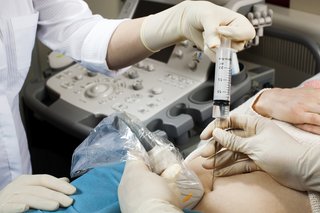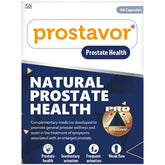Chorionic villus sampling
Overview-Chorionic villus sampling
Chorionic villus sampling (CVS) is a test you may be offered during pregnancy to check if your baby has a genetic or chromosomal condition, such as Down's syndrome, Edwards' syndrome or Patau's syndrome.
It involves removing and testing a small sample of cells from the placenta, the organ linking the mother's blood supply with her unborn baby's.
When CVS is offered
CVS is not routinely offered to all pregnant women.
It's only offered if there's a high risk your baby could have a genetic or chromosomal condition.
This could be because:
- an antenatal screening test has suggested your baby may be born with a condition, such as Down's syndrome, Edwards' syndrome or Patau's syndrome
- you had a previous pregnancy affected by a genetic condition
- you have a family history of a genetic condition, such as sickle cell disease, thalassaemia, cystic fibrosis or muscular dystrophy
It's important to remember that you do not have to have CVS if it's offered. It's up to you to decide whether you want it.
A midwife or doctor will speak to you about what the test involves, and let you know what the possible benefits and risks are, to help you make a decision.
How CVS is performed
CVS is usually carried out between the 11th and 14th weeks of pregnancy, although it's sometimes performed later than this if necessary.
During the test, a small sample of cells is removed from the placenta using 1 of 2 methods:
- transabdominal CVS – a needle is inserted through your tummy (this is the most common method used)
- transcervical CVS – a tube or small forceps (smooth metal instruments that look like tongs) are inserted through the cervix (the neck of the womb)
The test itself takes about 10 minutes, although the whole consultation may take about 30 minutes.
The CVS procedure is usually described as being uncomfortable rather than painful, although you may experience some cramps that are similar to period pains for a few hours afterwards.
Getting your results
The first results of the test should be available within 3 working days and this will tell you if Down's syndrome, Edwards' syndrome or Patau's syndrome has been discovered.
If rarer conditions are also being tested for, it can take 2 to 3 weeks or more for the results to come back.
A specialist doctor (obstetrician) or midwife will explain what the screening results mean and talk to you about your options.
There's no cure for most of the conditions found by CVS, so you'll need to consider your options carefully.
You may decide to continue with your pregnancy while gathering information about the condition so you're fully prepared.
What are the risks of CVS?
Before you decide to have CVS, the risks and possible complications will be discussed with you.
One of the main risks associated with CVS is miscarriage, the loss of the pregnancy in the first 23 weeks.
This is estimated to occur in up to 1 out of every 100 women who have CVS.
There are also some other risks, such as infection or needing to have the procedure again because it was not possible to accurately test the first sample.
The risk of CVS causing complications is higher if it's carried out before the 10th week of pregnancy, which is why the test is only carried out after this point.
What are the alternatives?
An alternative to CVS is a test called amniocentesis.
This is where a small sample of amniotic fluid, the fluid that surrounds the baby in the womb, is removed for testing.
It's usually carried out between the 15th and 18th week of pregnancy, although it can be performed later than this if necessary.
This test has a similar risk of causing a miscarriage, but your pregnancy will be at a more advanced stage before you can get the results, so you'll have less time to consider your options.
If you're offered tests to look for a genetic or chromosomal condition in your baby, a specialist involved in carrying out the test will be able to discuss the different options with you and help you make a decision.
Why it's offered-Chorionic villus sampling
Chorionic villus sampling (CVS) is only offered to pregnant women with an increased risk of having a baby with a genetic or chromosomal condition. It can diagnose a range of conditions.
You'll be offered CVS if your test results or medical or family history suggest you have a higher chance of having a baby with a genetic or chromosomal condition.
You do not have to have the test if it's offered. It's up to you to decide whether you want it.
What conditions can CVS detect?
CVS can be used to diagnose a number of conditions, including:
- Down's syndrome – all children born with Down's syndrome have some degree of learning disability and delayed development, but this varies widely between children
- Edwards' syndrome and Patau's syndrome – conditions that can result in miscarriage, stillbirth or severe physical problems and learning disabilities
- cystic fibrosis – a condition where the lungs and digestive system become clogged with thick, sticky mucus
- Duchenne muscular dystrophy – a condition that causes progressive muscle weakness and disability
- thalassaemia – a condition that affects the red blood cells, which can cause anaemia, restricted growth and organ damage
- sickle cell disease – where the red blood cells develop abnormally and are unable to carry oxygen around the body properly
- phenylketonuria – where your body cannot break down a substance called phenylalanine, which can build up to dangerous levels in the brain
CVS cannot detect neural tube defects. These are birth defects affecting the brain and the spinal cord, such as spina bifida, which can usually be detected with an ultrasound scan.
Deciding whether to have CVS
If you're offered CVS, ask your doctor or midwife what the procedure involves and what the risks and benefits are before deciding whether to have it.
ARC is a charity that provides information, advice and support on all issues related to screening during pregnancy.
Reasons to have CVS
CVS will usually tell you for certain if your baby will or will not be born with any of the conditions that were tested for.
You might find that your baby does not have the condition screening tests said they might have, which can be reassuring.
But if the test confirms that your baby does have the condition they were tested for, you can decide how you'd like to proceed.
Reasons not to have CVS
There's a risk of miscarrying the baby. Up to 1 out of every 100 women who have CVS will miscarry.
You may feel this risk outweighs the potential benefits of the test.
Some women choose to have an alternative test called amniocentesis later in their pregnancy instead.
Some women decide they'd rather find out if their baby has a genetic condition when their baby is born.
What happens-Chorionic villus sampling
Chorionic villus sampling (CVS) involves taking a sample of cells from the tissue of the placenta (the chorionic villi).
Preparing for CVS
You will not usually need to do anything special to prepare for CVS. You can eat and drink as normal beforehand.
In some cases, you may be asked to avoid going to the toilet for a few hours before having CVS because it's sometimes easier to do the test when your bladder is full.
Your doctor or midwife will tell you about this before you attend your appointment.
You can bring a partner, friend or family member for support when you have the test.
How CVS is performed
CVS is carried out under the continuous guidance of an ultrasound scan.
This is to make sure nothing enters the amniotic sac (the protective sac that cushions the baby) or touches the baby.
The test can be carried out using 2 different methods: transabdominal CVS and transcervical CVS.
Transabdominal CVS

Your tummy is cleaned with antiseptic before a local anaesthetic injection is used to numb it.
A needle is inserted through your skin into the womb and guided to the placenta using the image on the ultrasound scan.
A syringe is attached to the needle, which is used to take a small sample of cells from the chorionic villi.
After the sample is removed, the needle is removed.
Transcervical CVS
A sample of cells from the chorionic villi is collected through the neck of your womb (the cervix).
A thin tube attached to a syringe, or small forceps, are inserted through your vagina and cervix and guided towards the placenta using the ultrasound scan.
Which method will be used?
The transabdominal method is preferred in most cases because it's often easier to carry out.
Transcervical CVS is also more likely to cause vaginal bleeding immediately after the procedure, which occurs in about 1 in 10 women who have this procedure.
But there's no difference in the rate of miscarriages between the 2 methods.
Transcervical CVS may be preferred to transabdominal CVS if it's easier to reach your placenta this way.
Is CVS painful?
CVS is usually described as being uncomfortable, rather than painful.
In most cases, an injection of local anaesthetic will be given before transabdominal CVS to numb the area where the needle is inserted, but you may have a sore tummy afterwards.
How long does it take?
CVS usually takes around 10 minutes, although the whole consultation may take about 30 minutes.
Afterwards, you'll be monitored for up to an hour in case you have any side effects, such as heavy bleeding.
You can then go home to rest.
It's a good idea to arrange for someone to drive you home as you might not feel up to it yourself.
Recovering after CVS
After having CVS, it's normal to have cramps similar to period pain and light vaginal bleeding called spotting for a few hours.
You can take painkillers you can buy in a pharmacy or shop, such as paracetamol (but not ibuprofen or aspirin) if you experience any discomfort.
You may wish to avoid any strenuous activity for the rest of the day.
Contact your midwife or the hospital where the procedure was carried out for advice as soon as possible if you develop any of the following symptoms afterwards:
- persistent or severe pain
- a high temperature or feeling hot or shivery
- heavy vaginal bleeding
- discharge of clear fluid from your vagina
- contractions
Getting the results
The first results should be available within a few days. This will tell you whether a genetic or chromosomal condition has been discovered.
If rarer conditions are also being tested for, it can take 2 to 3 weeks or more for the results to come back.
You can usually choose whether to get the results over the phone or during a face-to-face meeting at the hospital or at home.
Results-Chorionic villus sampling
After chorionic villus sampling (CVS) has been carried out, the sample of cells will be sent to a laboratory to be tested.
The number of chromosomes (bundles of genes) in the cells can be counted, and the structure of the chromosomes can be checked.
If CVS is being carried out to test for a specific genetic condition, the cells in the sample can also be tested for this.
Getting the results
The first results should be available within 3 working days.
This will tell you whether a chromosomal condition, such as Down's syndrome, Edwards' syndrome or Patau's syndrome, has been found.
If rarer conditions are also being tested for, it can take 2 to 3 weeks or more for the results to come back.
You can usually choose whether to get the results over the phone or during a face-to-face meeting at the hospital or at home.
You'll also receive written confirmation of the results.
How reliable are the results?
CVS is estimated to give a definitive result in 99 out of every 100 women having the test.
But it cannot test for every condition and it's not always possible to get a conclusive result.
In a very small number of cases, the results of CVS cannot establish with certainty if your baby will have the condition the test is looking for.
This might be because the sample of cells removed was too small.
Or there's a possibility there's a change in the structure of the chromosomes in the placenta and not in the baby.
If this happens, it may be necessary to have amniocentesis, an alternative test where a sample of amniotic fluid is taken from the womb.
This is done a few weeks later to confirm a diagnosis.
What the results mean
Many women who have CVS will have a "normal" result. This means that none of the conditions that were tested for were found in the baby.
But as the test only checks for conditions caused by certain genes, it cannot exclude any conditions not tested for.
If your test result is "positive", your baby has 1 of the conditions they were tested for.
In this instance, the implications will be fully discussed with you and you'll need to decide how to proceed.
What happens if a condition is found
If your test results show that your baby will be born with a condition, you can speak to a number of specialists about what this means.
These could include a midwife, a doctor who specialises in children's health (consultant paediatrician), a geneticist and a genetic counsellor.
They'll be able to give you detailed information about the condition, including the possible symptoms your child may have, the treatment and support they might need, and whether their life expectancy will be affected, to help you decide what to do.
A baby born with 1 of these conditions will always have the condition, so you'll need to consider your options carefully.
Your options are to:
- continue with your pregnancy – it can help to find out as much as you can about the condition your baby may have
- end your pregnancy (have a termination)
This can be a very difficult decision, but you do not have to make it on your own.
As well as discussing it with specialist healthcare professionals, it can help to talk things over with your partner and speak to close friends and family.
You can also get support and more information from charities like:
- Antenatal Results and Choices (ARC)
- Down's Syndrome Association
- Sickle Cell Society
- SOFT UK (Support Organisation for Trisomy 13 and 18)
Risks-Chorionic villus sampling
Before you decide to have chorionic villus sampling (CVS), you'll be told about the risks and possible complications.
Miscarriage
CVS carries a risk of miscarriage, which is the loss of a pregnancy in the first 23 weeks.
The risk of miscarriage after CVS is estimated to be up to 1 in 100.
This means that 1 in every 100 women will have a miscarriage after having CVS.
But it's difficult to determine which miscarriages would have happened anyway, and which are the result of the CVS procedure.
Some recent research has suggested only a very small number of miscarriages that occur after CVS are a direct result of the procedure.
Most miscarriages that happen after CVS occur within 3 days of the procedure.
But in some cases a miscarriage can occur later than this (up to 2 weeks afterwards).
There's no evidence to suggest you can do anything during this time to reduce your risk.
The risk of miscarriage after CVS is thought to be similar to that of an alternative test called amniocentesis, which is carried out slightly later in pregnancy (between week 15 and 18).
Inadequate sample
In around 1 in 100 procedures, the sample of cells removed may not be suitable for testing.
This could be because not enough cells were taken, or because the sample was contaminated with cells from the mother.
If the sample is unsuitable, CVS may need to be carried out again, or you could wait a few weeks to have amniocentesis instead.
Infection
As with all types of surgical procedures, there's a risk of infection during or after CVS.
But severe infection occurs in less than 1 in every 1,000 procedures.
Rhesus sensitisation
If your blood type is rhesus (RhD) negative but your baby's blood type is RhD positive, it's possible for sensitisation to occur during CVS.
This is where some of your baby's blood enters your bloodstream and your body starts to produce antibodies to attack it.
If it's not treated, this can cause the baby to develop rhesus disease.
If you do not already know your blood type, a blood test will be carried out before you have CVS to see if there's a risk of sensitisation.
If necessary, an injection of a medication called anti-D immunoglobulin can be given to stop sensitisation occurring.
- Chorionic villus sampling
- Chorionic villus sampling myths
- Complication of Chorionic villus sampling
- Diagnosis of Chorionic villus sampling
- How is Chorionic villus sampling treated?
- Medicine for Chorionic villus sampling
- Remedies for Chorionic villus sampling
- Support for Chorionic villus sampling
- Symptoms associated with Chorionic villus sampling
- The best British Online Pharmacy
- Top 10 UK Pharmacies
- Treatment for Chorionic villus sampling
- What causes Chorionic villus sampling
- What is Chorionic villus sampling
- Where can I buy medicine for Chorionic villus sampling in the UK
- ZimSeller Pharmacy



















